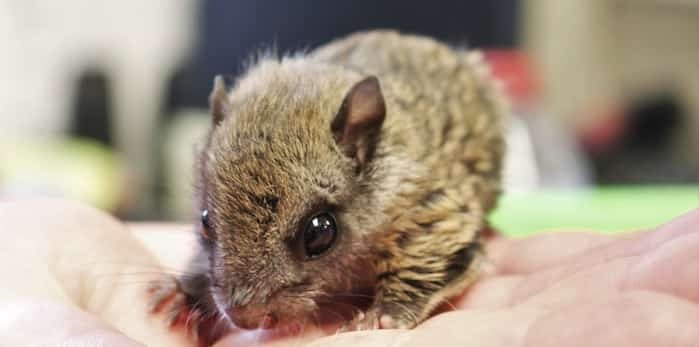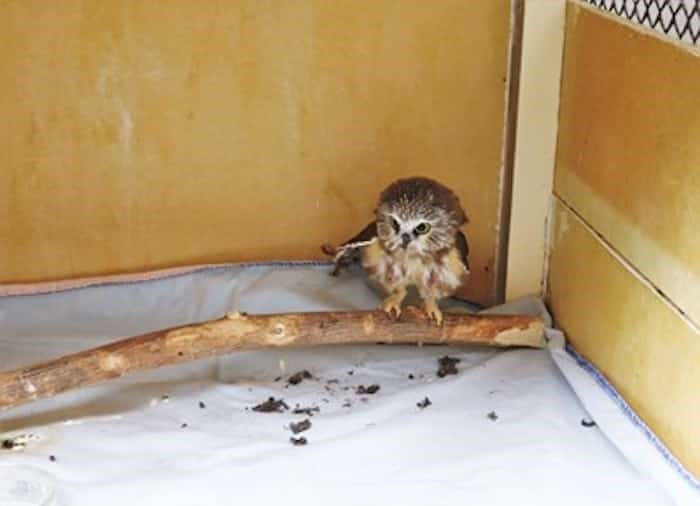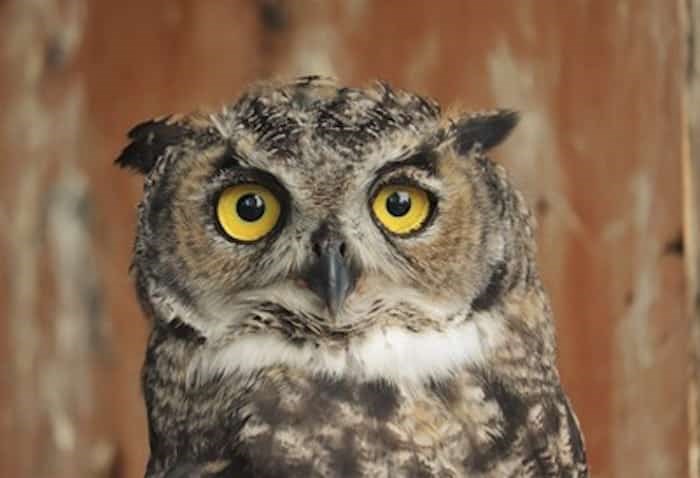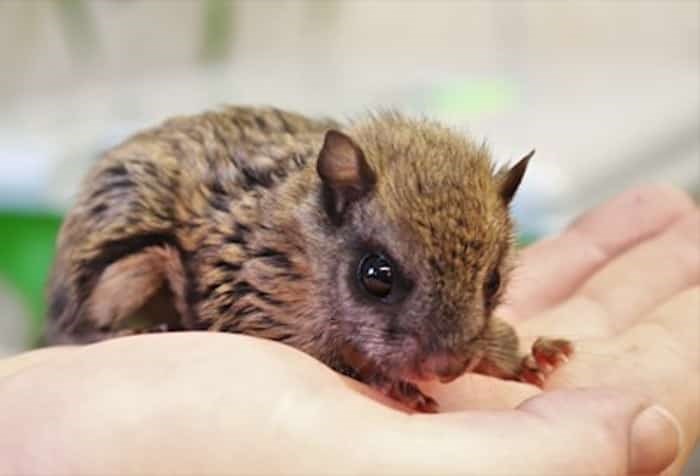 Photo: A northern flying squirrel that’s recovering at the centre may be a forever resident, as an educational animal. Photo: Brendan Kergin
Photo: A northern flying squirrel that’s recovering at the centre may be a forever resident, as an educational animal. Photo: Brendan Kergin
While most locals know the B.C. Wildlife Park in Dallas quite well, the attached Fawcett Family Wildlife Health Centre is always busy with sick and injured wildlife, hidden just metres away from park visitors.
Inside, animal health technologist Paige McKnight and animal health supervisor Tracy Reynolds deal with a small ark's worth of animals, from painted turtles to robins to flying squirrels to bobcats. So far this year, they've cared for some 300 animals.
"We do mammals and birds and amphibians, reptiles, all of them," Reynolds says. "We aren't allowed to take in absolutely everything; anything that is an introduced species we can't take, or anything that's considered a pest species."
Pest species would include raccoons, rats and similar animals. McKnight says about 80 per cent of the animals they see are birds, while mammals show up 10 to 15 per cent of the time. Reptiles and amphibians, meanwhile, visit less frequently (three to five per cent). Reynolds tells KamloopsMatters staff usually see four or five turtles a year, almost always because they were hit by cars (a theme at the hospital).
 The saw-whet owl is one of Tracy Reynold’s favourites. Photo: Brendan Kergin
The saw-whet owl is one of Tracy Reynold’s favourites. Photo: Brendan Kergin
"I think 80 per cent of the things we get in here are human-related, so indirectly or directly caused by what we do as people," Reynolds says.
The centre is similar to a human hospital, with a clinic area where the two women, along with veterinarian Dr. Ellen Denstedt (who comes in one or two days a week) care for the recent arrivals, triaging them, running some tests and caring for the animals that need the most TLC.
"It is a bit of a heartache, this job, because a lot of the things that come in — over 50 per cent probably — are not rehabilitable," Reynolds says. "We have to put them down."
"People don't realize the extent of the injuries and they're not going to make it, so we will humanely put them down."
"People have a perception, like with their pets, that you can fix it most of the way and they'll have a good quality of life," adds McKnight. "But with us, the standard is so high to get them to the point where they're successful in the wild and able to perform their natural duties."
"That means they have to be pretty much perfect to be released, so our threshold has to be that much higher."
Outside, there are a variety of enclosed areas for those who do make it to rehabilitation, including larger pens for eagles and other large birds of prey and a duck area for the many mallards and other ducks that come in. The pens neighbour the burrowing owls' pen and the park's pens for animals on display.
 Vern, grown up now, is looking much stronger and they’re preparing for live feeds so he can be released knowing how to hunt. Photo: Brendan Kergin
Vern, grown up now, is looking much stronger and they’re preparing for live feeds so he can be released knowing how to hunt. Photo: Brendan Kergin
The pens are often tall, to allow for birds to practice and strengthen their flying. For some, it's where they learn, or relearn, how to hunt with live prey bred to feed the patients. Reynolds says many of the birds that come in are young, juveniles or nestlings that haven't learned how to fend for themselves.
"I think one of my favourite stories this year was a little great horned owl that came in, he was just a little nestling ...just a big ball of fluff," Reynolds says. "He had fallen out of the nest, obviously, somewhere and was in some long grass and a fellow was weed whipping his yard and he actually weed whipped the poor little owl."
Luckily for Vern, the weed whipper left a minor wound and he's been able to heal fully. Now, nearly full-grown, McKnight and Reynolds are preparing to teach him how to hunt so he can be released.
"Ultimately, the goal is to release them," Reynolds says. "Under our permits, we're not allowed to keep things that are not releasable."
 This little northern flying squirrel may be the cutest animal in the area. Photo: Brendan Kergin
This little northern flying squirrel may be the cutest animal in the area. Photo: Brendan Kergin
Occasionally, they'll petition the government to allow them to keep something that was wild. The rehab centre currently has a northern flying squirrel, a small, nocturnal rodent — Reynolds is considering having it remain on the premises as an educational animal, as it may not fully recover. It doesn't take many resources to care for and it, she says.
Managing resources at the rehab centre is a balancing act as well, since the facility doesn't have a standard budget.
"We don't really have a budget, we just kind of beg, steal and borrow and do what we do here," Reynolds says. "Everything that we bring in the front door (of the wildlife park), that's how we fund this hospital."
Donations also keep them afloat, cash or otherwise. Reynolds says they're hoping to get a fridge donation right now, as the old one in the clinic broke down. They're also saving up for their own used X-ray machine (they're around halfway to their goal of $40,000).
"We get a lot of animals and they're extremely broken and we need to see how broken and where it's broken," Reynolds says. "The obvious reason is broken bones, but recently I just had a loon in that had swallowed a fish hook. An X-ray would have been amazing because I would have been able to see how far down it went."
The good news is the loon is OK, and was recently released. They were able to pull the hook out of its throat without incident, but it was a risky procedure since they didn't know what was at the other end of the fishing line coming out of the bird's mouth.
The centre also relies on the public to bring in animals, the sooner the better.
"Sooner is better — if you wait on an injury and it's something like a broken bone and it starts to set wrong, then we can't fix it," Reynolds says. "If we get it early enough then it's a better chance we can realign it and get it healing better than if it were just left."
She adds there's no cost for bringing a wild animal to the centre.
The wildlife park often has events, with entrance fees or donations going to the rehab centre; a big one coming up is the free admission day Thanksgiving weekend in October.
To donate to the rehab centre, click HERE.



